Character Design Tips to Help You Instantly Improve!
These character design tips will help you instantly improve your art! So get ready to learn how to create impressive and memorable characters. These tips will help you improve every aspect of your character designs, from the beginning to final stages. For instance, the tips are broken down into three phases, collecting information, exploring, and finalizing. Additionally, following the phases in order will help you craft better character designs.
Furthermore, these character design tips work for artists of all levels. That being so, whether you are a beginner or artist with more experience, these tips will take your character designs to the next level. Likewise, these tips are very helpful, whether you want to design characters for animations, comics, video games, etc. So continue reading to find out the tips.
Character Design Tips for Phase 1: Collecting Information
The first step on how to craft better character designs is acquiring information. Collecting information needs to be phase one of your character design process. This is because information informs you on how to craft a better design. For instance, you need to gather inspiration, find out your client’s needs, and understand your character. By finding out these things first, you will be able to craft better characters.
Tips for Getting Inspiration
Getting inspiration will help you to make better character designs. For instance, try making a mood board on Pinterest or making a collage of inspiring photos. Doing so can help inform the color palette, tone, personality, etc. that you want a character design to have. Below you can see an example of getting inspiration. It is a Pinterest board I used to help design my comic character, Amelie.
As well, make sure to collect references for the character you are going to be designing. References will help improve the accuracy and details in your designs. If necessary, read more on how to use references in your art.
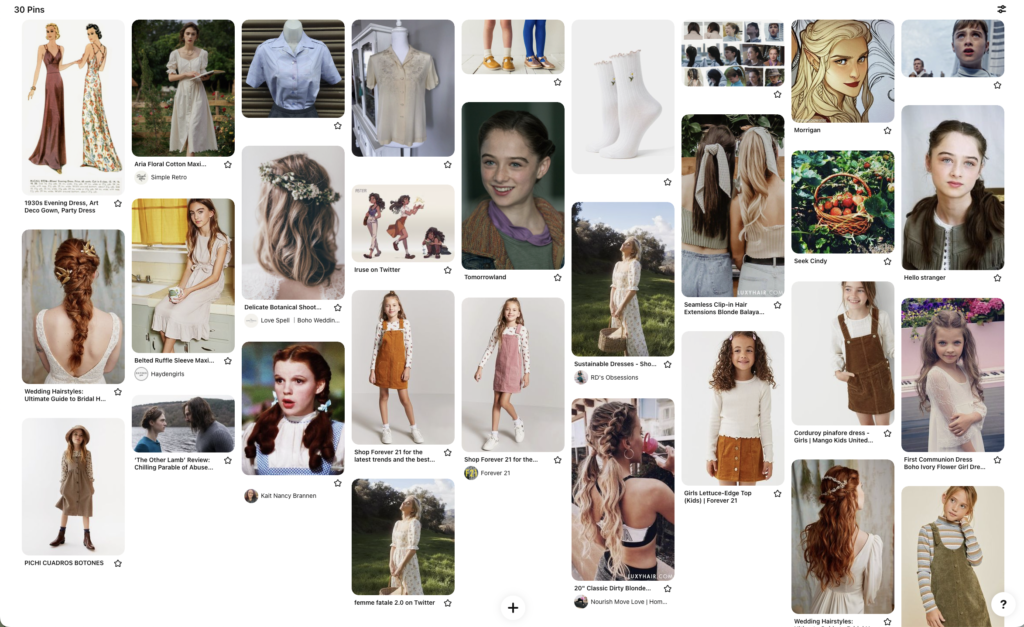
Tips for Knowing Your Client
Knowing your client will help you craft better character designs as well. A client can be whoever is commissioning you or even yourself. The point of this step is to know the purpose and goals of your character design.
So ask some questions to help know your client. For example, will this character design be for film, animation, video games, comics, or something else? Similarly, how complex should this character design be? Moreover, is there a particular style this character needs to fit? If not, what style would suit this character?
Below, is an early design I did for my comic character, Amelie. However, I had to scrap this version of her. I made the mistake of not knowing the intent of this character. The elf ears, medieval armbands, and young appearance do not match the story she is for. The point is, make sure to know your client to avoid wasting time making unsuitable designs.
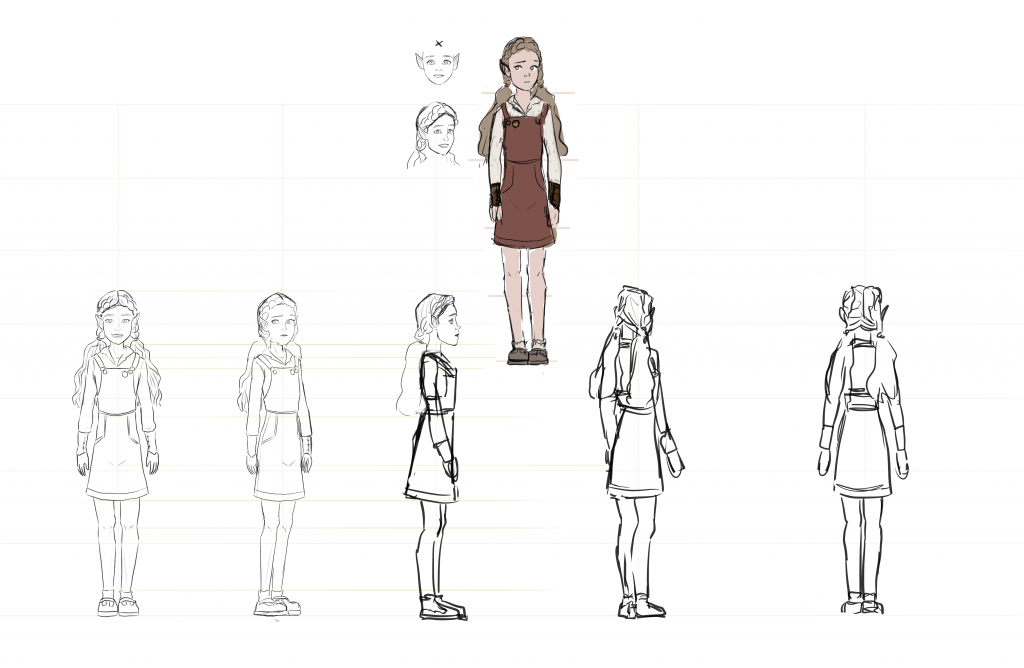
Tips for Knowing Your Character
The last part of the information phase of character design is knowing your character. Just like knowing your client, knowing your character, will help you to make better character designs too. How do you get to know your character though? Simply, find out or create details about them. For example, familiarize yourself with your character’s backstory. Get to know things about their culture or background. Likewise, determine what their personality is like. Similarly, think about what color palette would suit them.
Knowing your character will help inform you what design elements will suit their physical appearance best. Below, you can see a character inspiration meme I did to help better understand my comic character, Amelie. Try doing this meme for your own characters to help discover what traits suit them.
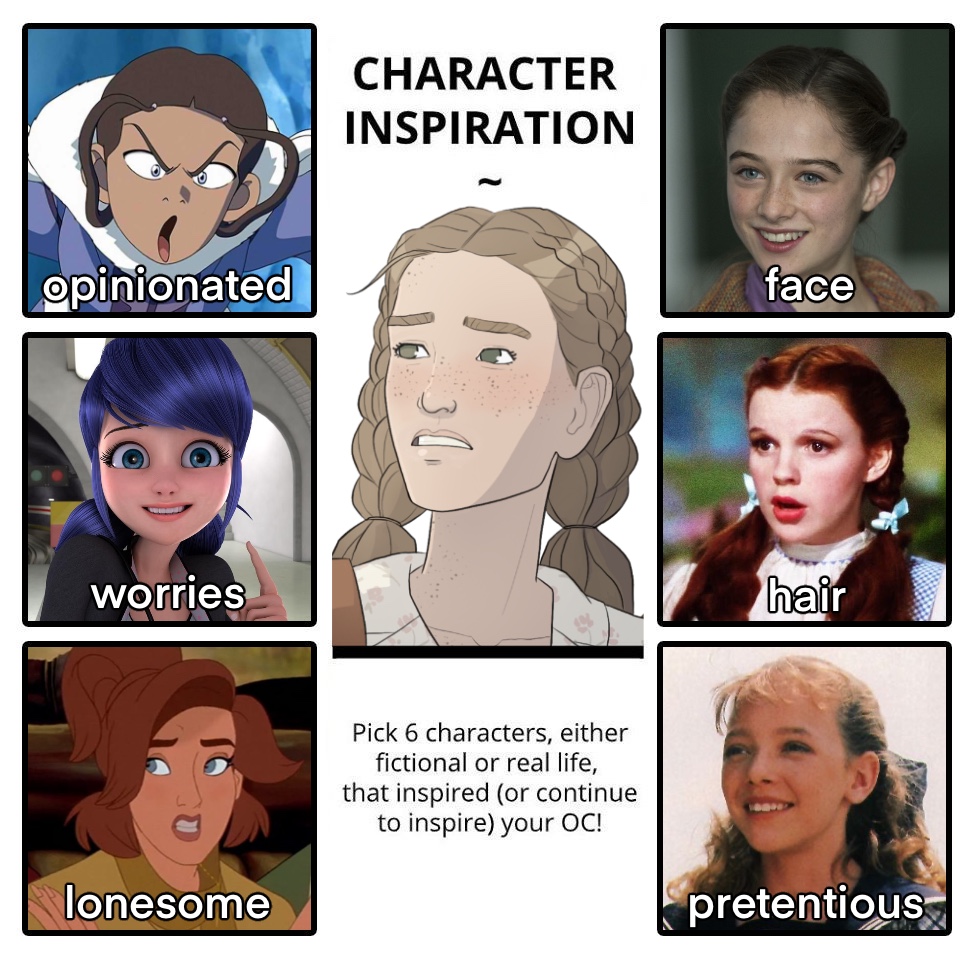
Character Design Tips for Phase 2: Exploring
Another way to improve your character designs is during the second phase of character design, the exploration phase. Sometimes, artists skip right over this phase, as well the previous phase. However, exploring is super helpful for creating better character designs. Below are some tips for this exploratory phase. Continue reading to find out the details on testing things out, crafting poses and expressions, and creating style.
Tips for Testing Things Out
Testing things out is a very important part of the exploration phase. Testing things out includes doing rough passes, making thumbnails, and unabashedly throwing things out there. As well, testing includes trying iterations, otherwise known as variations. For example, as shown below, trying out different shape language can help you discover the best design for a character. Likewise, so can trying out different ages for a character.
By testing out many designs you will expand the options for your character’s appearance. You will likely even come up with something more interesting than your first try. As well, you will be able to figure out the most fitting design for your character.

Tips for Crafting Poses & Expressions
Crafting different poses and expressions is another important part of creating good character designs. So explore how your character moves and emotes. As well, practice using a line of action to create strong poses. Likewise, figure out how realistic or exaggerated you want the designs to come across. As shown in the example below, these can just be sketches.
Additionally, remember that character designs are not meant for a singular intent. They are meant to show and communicate a story involving that character. That means you need to keep in mind that character designs are not static. They need to work for multiple poses, angles, and emotions. Accordingly, good poses and expressions are important to making better character designs.
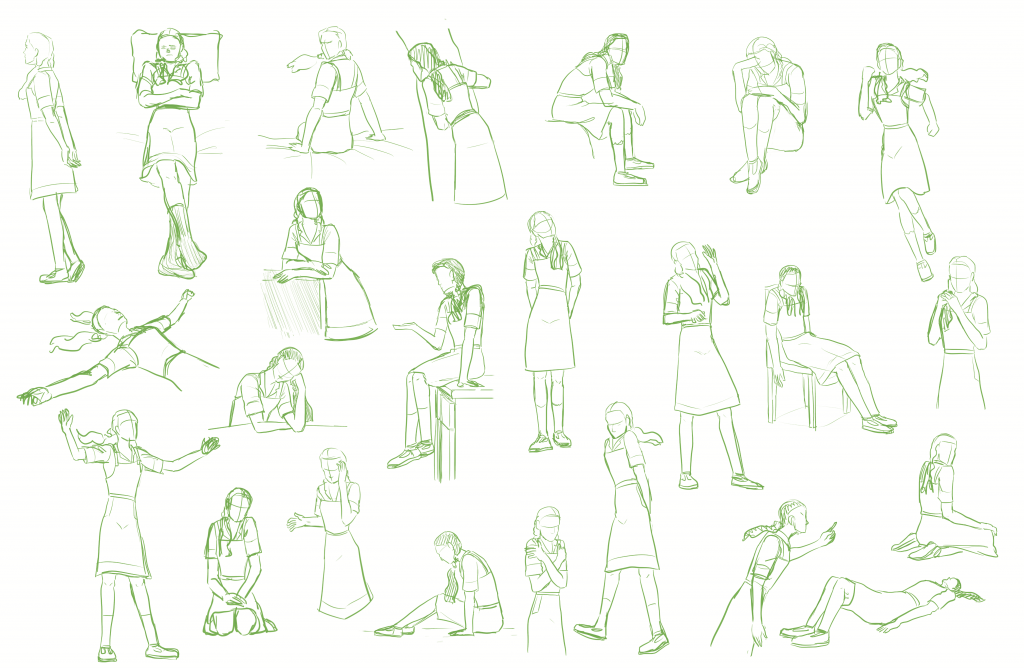
Tips for Creating Style
Another way to create better character designs is to add more focus to your character’s style. Character designs are meant to be unique and memorable. So do not be afraid to exaggerate or caricature. Likewise, make sure your character’s silhouette is clear and unique. Additionally, translate your character’s defining traits into their physical expression.
Creating style for your character also includes designing their belongings. So spend some time developing any important props they will carry. As well, do some clothing explorations if they will be seen in multiple outfits. Below you can see some outfit explorations I did for my comic character, Amelie, before settling on a few final outfits for her. Think of props and clothing as an extension of your character. Following these tips will help you to create a unique and memorable style for your character.
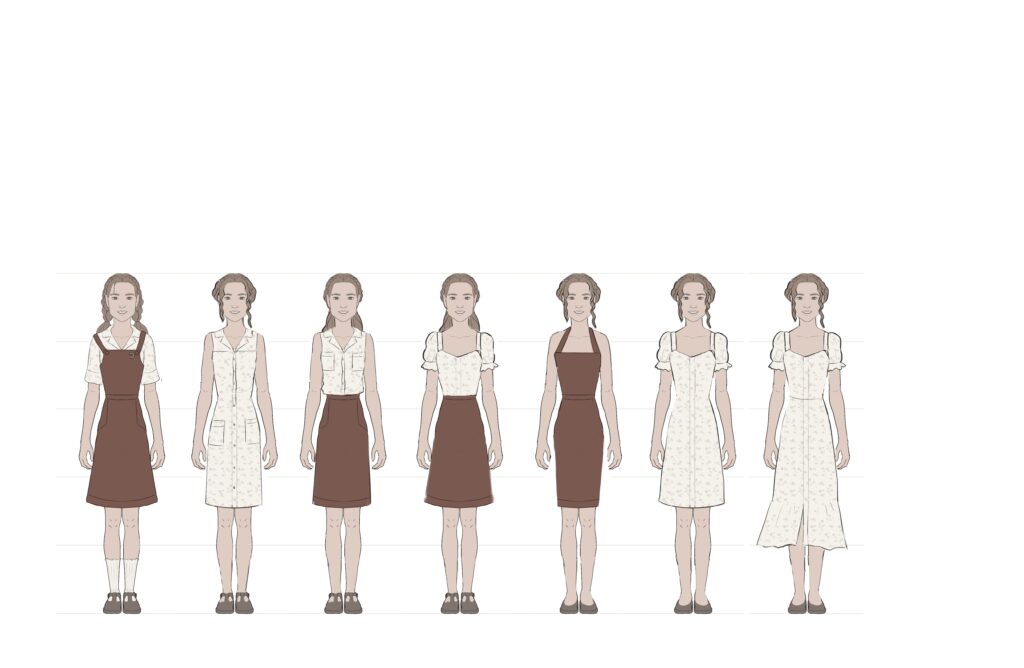
Character Design Tips for Phase 3: Finalizing
One more way to improve your character designs is during this third phase, the finalization phase. Finalizing your characters includes making model sheets, tests, and revisions. By improving at the finalization stage, you will be able to create better character designs. So continue reading below to find out tips on each of these aspects of finalizing.
Tips for Making Model Sheets
Model sheets are such an important part to making better character designs. In this stage, you should pay special attention to how your character will work three dimensionally. Likewise, be sure to use the reference collected during phase one to help make a more solid character. Moreover, learn some detailed tips on how to make character model sheets.
Also, be sure to make a turnaround including at least a few different angles of your character. This will be a big payoff in the future. For instance, turnarounds are helpful to have as reference if the character design is going to be turned into a 3d model. Likewise, turnarounds are helpful for keeping a character design consistent in a comic or animation. Below is an example turnaround sheet of my comic character, Amelie. Get some more examples by looking at other the turnaround sheets for my comic.
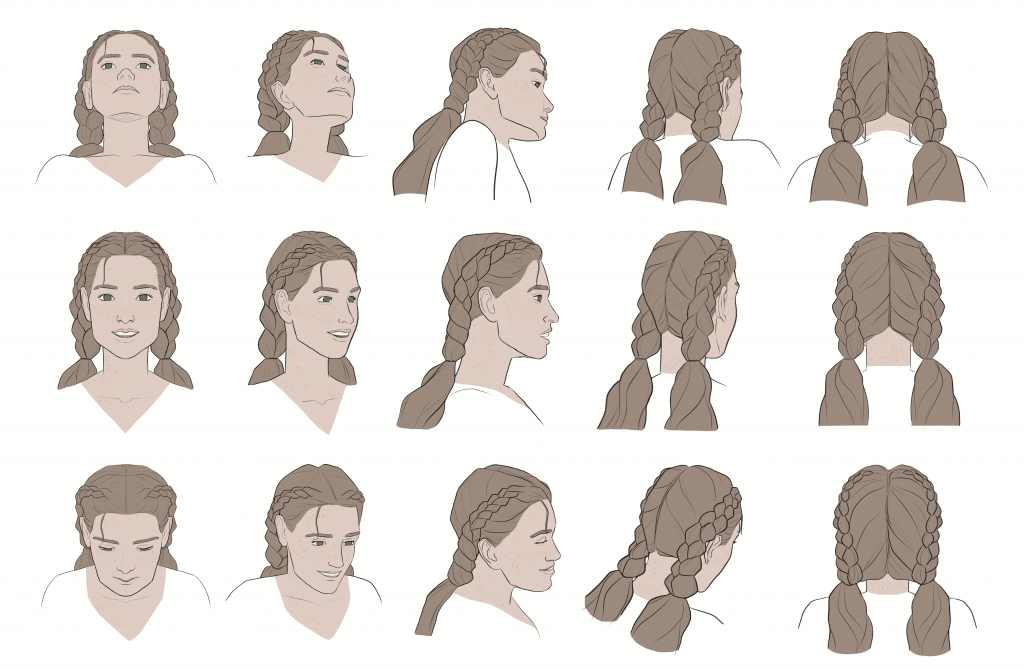
Tips for Testing
Making tests of your characters is also super important for creating better character designs. Tests help you find out what is not working. So be sure to try out your character in their intended medium. For example, do an animation test, make some sample comic pages, or put your character in an illustration. Likewise, try some lighting or painting tests. As well, when doing tests, you can discover which parts are hard to keep on model, and make some notes on how to avoid that.

Tips for Revising
My final tip for creating better character designs is about making revisions. For example, do not be afraid of constructive criticism. Make sure to get feedback on your character designs. As well, be sure to implement any necessary changes to your character designs. A little extra time spent fixing some issues will help kick your character designs up a notch. So although it can be a pain, be sure not to skip revising your designs.
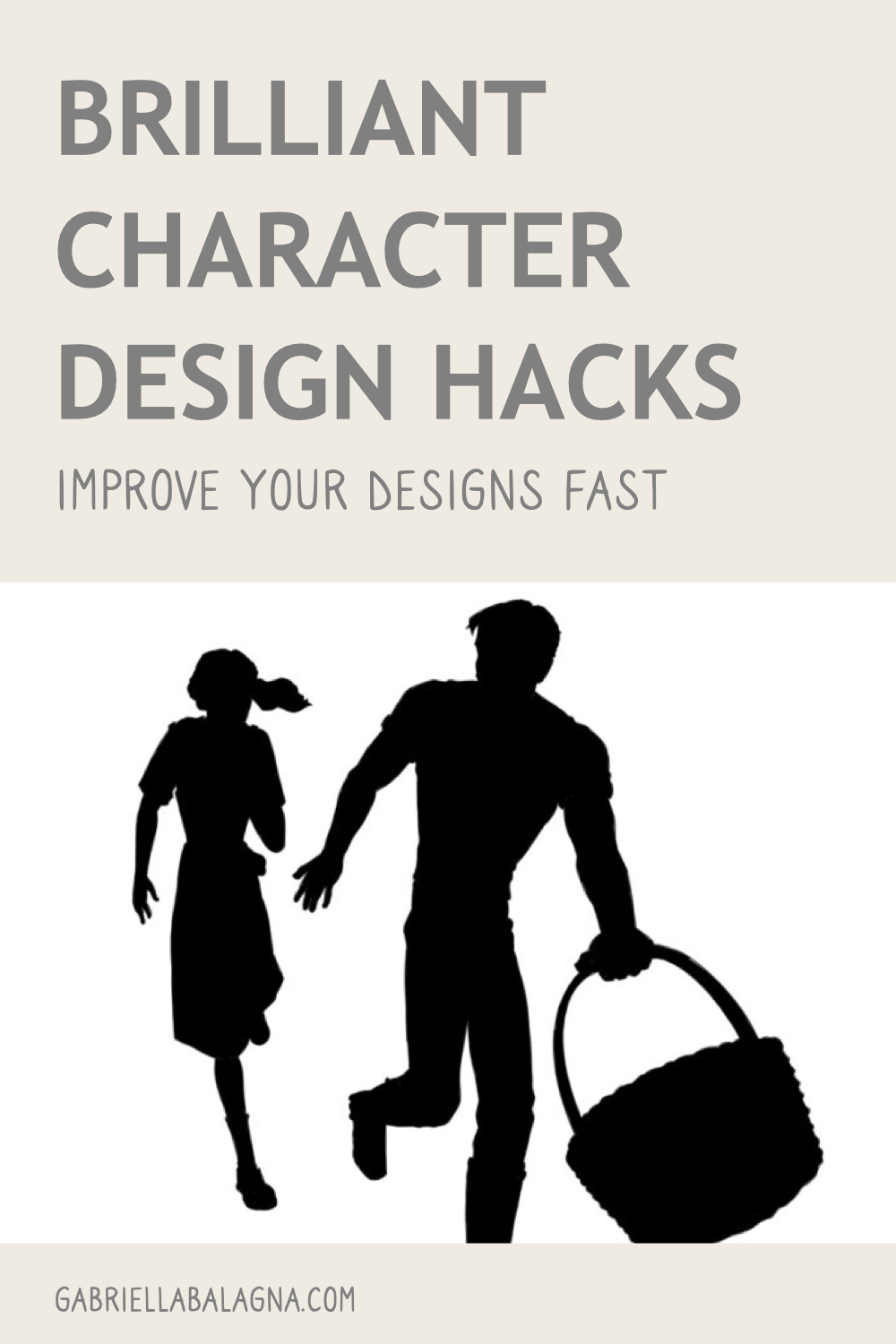
Character Design Summary
In summary, those are my tips to improve in three different phases of character design, and make better character designs. Artists should follow the three phases in order to create better characters. Firstly, the information stage involves improving at getting inspiration, knowing your client, and knowing your character. Secondly, the exploration stage involves improving at testing things out, crafting poses and expressions, and creating style. Thirdly, the finalization phase involves improving at making model sheets, testing, and revising.
Learn more about Amelie, my comic character, who is most of the example images in this article.
Share on social media how this article helps you improve your character designs. And tag me on Twitter or Instagram showing the characters you create! Finally, subscribe for more art tips like this.

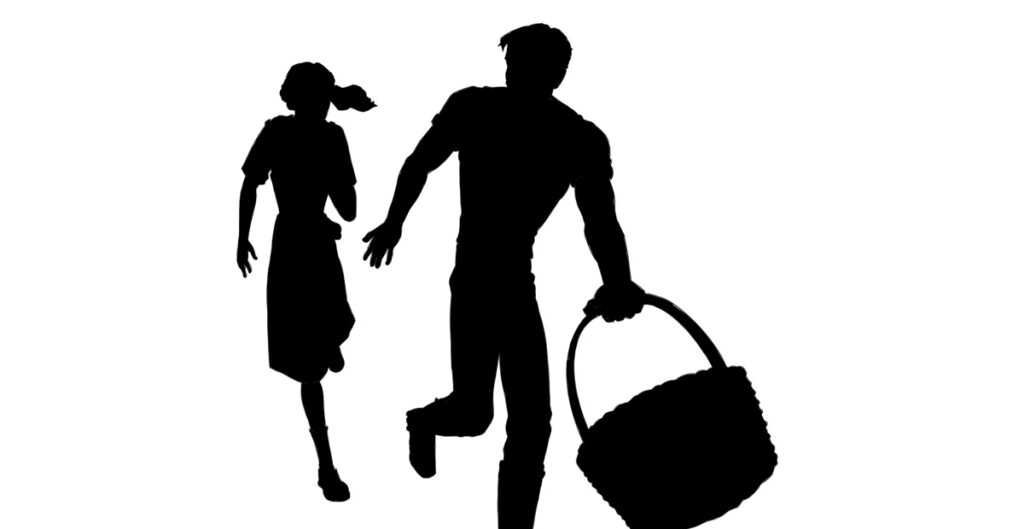
Discussion ¬